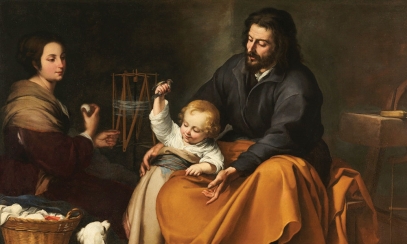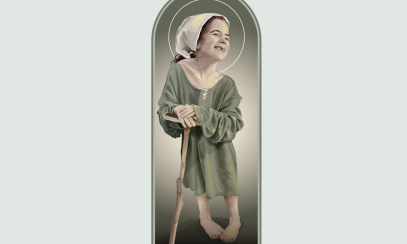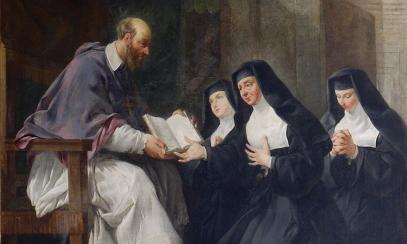Voice of Reason to the Pope
St. Catherine of Siena
St. Catherine of Siena
What’s a mother to do when her teenage daughter goes through one of those “difficult” phases – ignoring advice about clothes and friends, shutting herself in her room and refusing to eat with the family?
Well, if your daughter was St. Catherine of Siena, you’d let her have her way, even though that way was far different from the expected way of life for the child of a prosperous wool dyer in 14th century Italy. Catherine’s mother, Monna Lapa, didn’t understand her youngest daughter, but she allowed her 16-year-old to become a member of the Third Order of St. Dominic. She wore the habit of a Dominican nun while still living at home.
For three years, Catherine left her room only to go to Mass and confession, ate only a spoonful of herbs each day, and slept only two hours a night. After that time of asceticism, she rejoined her family and left her home to help the sick and the poor. She became extremely popular with people of all ages and walks of life who sought out her advice and wanted to follow her religious practices.
The people of Siena were confused that the former hermit had become such a popular figure with people coming to see her day and night, but their negative comments didn’t stop Catherine from encouraging her new friends, who became known as the “caterinati,” and later, the School of Mystics.
Catherine lived during a turbulent time in Church history, when Italian and French cardinals were practically at war with each other because the pope had left Rome for the city of Avignon, in France. Catherine was enlisted by the rulers of Florence to try to talk some sense into Pope Gregory XI and get him to return to Rome.
Always a straight talker, Catherine told the pope what he needed to do to restore order to the Church, and he agreed to return to Rome. However, he died within a year, and the new pope, Urban VI, an Italian, soon upset the French cardinals who elected a rival pope. Once again, Catherine was asked to try and resolve the problem.
Before Catherine left for Rome, she dictated a book that became known as The Dialogue of St. Catherine. That book, and her collected letters – more than 400 in all – are a great treasury of spiritual writing that led to Catherine’s designation as a Doctor of the Church, one of only three women to have that title.
Catherine spent the final year of her life in Rome, trying to reunite the Church. Resuming the practices she had begun as a teenager, she slept only an hour each night and lived only on the Blessed Sacrament as she wrote letters to people all over Europe to try to bring the various factions of the Church together. After suffering two strokes in 1380, Catherine died at the age of 33. Catherine of Siena was canonized only 81 years after her death. Her feast day is April 29.



